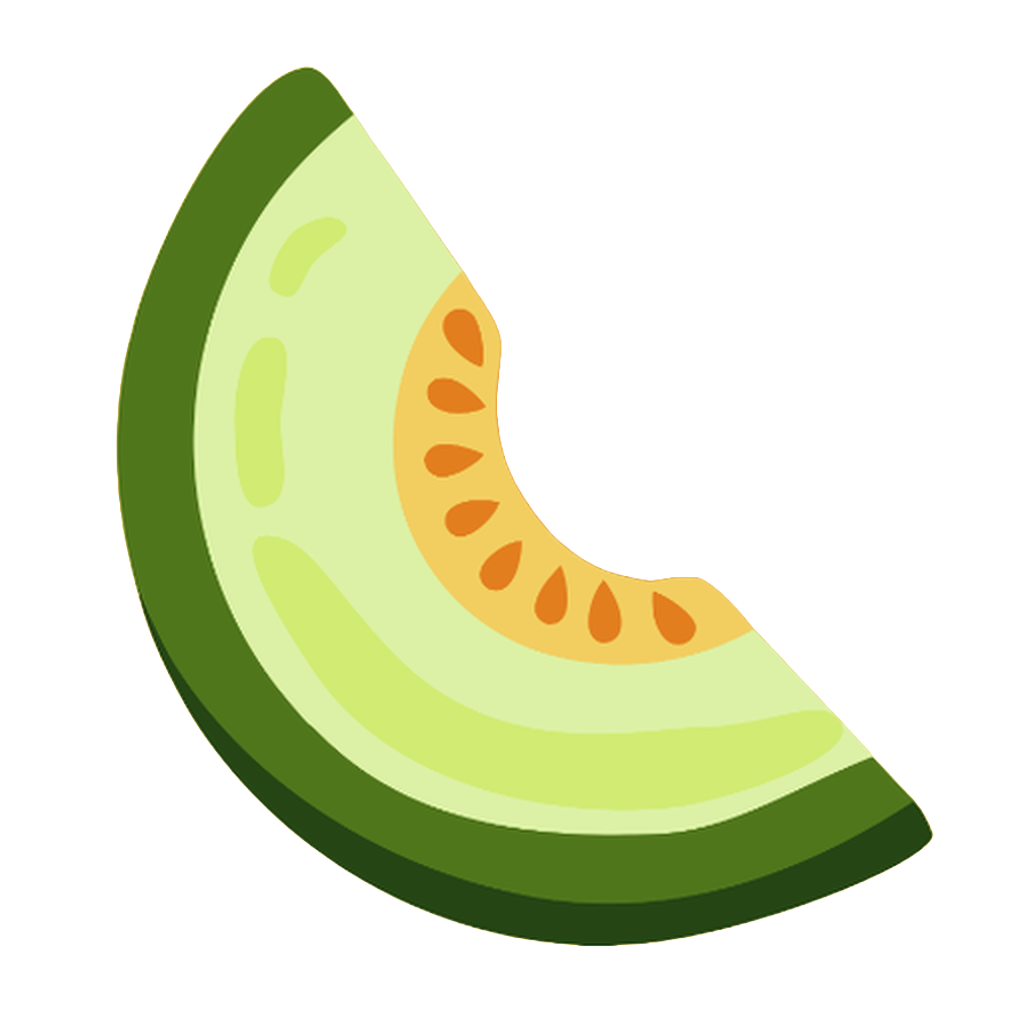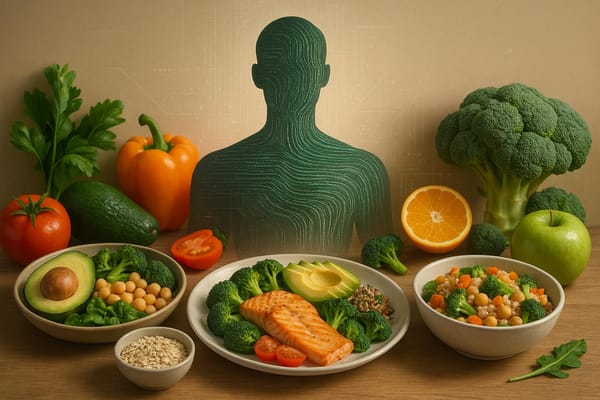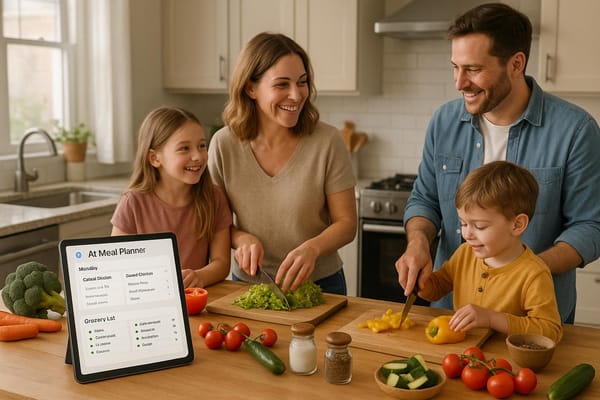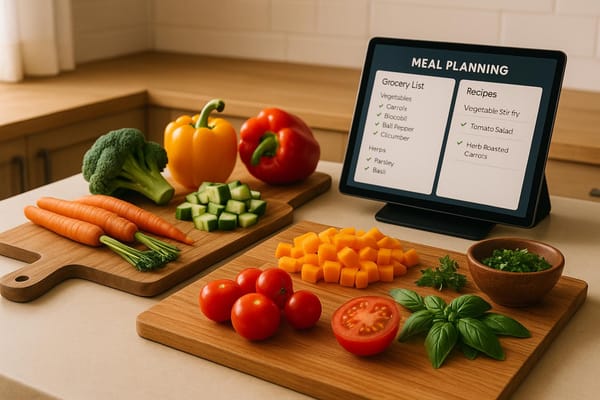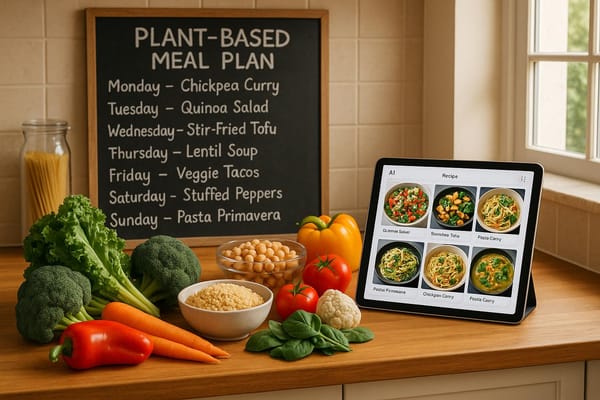How to Reduce Food Waste with Smart Meal Planning
Learn how smart meal planning can reduce food waste, save money, and simplify cooking with AI-powered tools and practical tips.
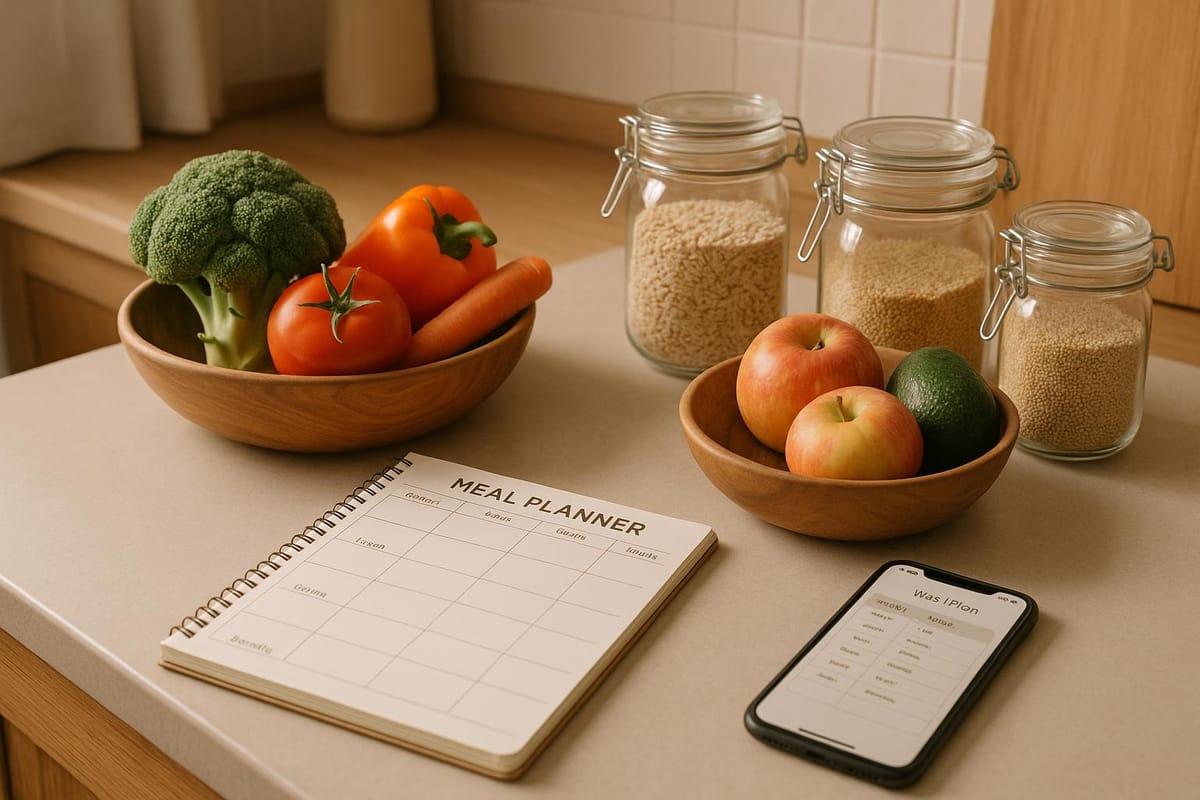
Food waste is a growing issue in U.S. households, impacting budgets and contributing to methane emissions. The solution? Smart meal planning. By organizing meals ahead of time, you can save money, use up ingredients before they spoil, and reduce waste. Tools like AI-powered apps simplify the process by tracking pantry items, suggesting recipes, and creating precise grocery lists. Here's how you can start:
- Plan meals based on what you already have. Check your pantry and fridge before shopping.
- Use AI tools to suggest recipes, track expiration dates, and manage portion sizes.
- Repurpose leftovers into new meals like soups, grain bowls, or omelets.
- Freeze and label food to extend its shelf life and avoid spoilage.
Apps like Honeydew Recipe Manager make it even easier by offering features like drag-and-drop meal calendars, nutrition tracking, and smart grocery lists. With these tools and habits, you can cut waste, save money, and make meal prep less stressful.
Menu Plan and Food Prep for Zero Food Waste
Using AI for Better Meal Planning
Artificial intelligence is changing the way families handle meal planning. By analyzing eating habits, predicting needs, and suggesting recipes that make the most of available ingredients, AI takes the guesswork out of daily cooking. It simplifies decisions, offering smart recipes and precise grocery lists that fit seamlessly into modern routines. The result? Meal solutions tailored to your household.
AI Features That Help Reduce Food Waste
AI-driven meal planning tools are excellent at keeping track of what you have and matching it with recipes. These systems learn your family’s food preferences while monitoring pantry and fridge contents. When you input your available ingredients, the AI suggests dishes that use them up before they go bad.
Portion control becomes much easier with AI. It calculates the ideal serving sizes for your household, reducing the risk of making too much food.
Expiration date tracking is another handy feature. AI can alert you when certain items are nearing their expiration date and recommend recipes to use them up. This proactive approach ensures ingredients don’t end up forgotten and wasted.
Smart substitutions save the day when you’re missing a key ingredient. Instead of skipping the recipe or making an extra grocery run, the AI suggests alternatives based on what you already have at home.
Custom Meal Plans for American Families
AI takes these efficient features a step further by tailoring meal plans to fit the unique needs of American households. It personalizes menus based on family preferences, dietary requirements, and even regional food availability.
For example, AI understands that American families often favor larger portions and hearty dishes. It also adapts suggestions to reflect what’s in season and readily available in local grocery stores, whether you’re in California or Kansas.
Dietary needs are always front and center. Whether a family follows a specific diet, manages food allergies, or simply avoids certain ingredients, AI remembers these details and ensures meal plans are aligned. This reduces the likelihood of meals going uneaten due to mismatched preferences.
Budget-friendly planning is another strength. AI can prioritize recipes that use affordable, versatile ingredients and suggest ways to stretch more expensive items across multiple meals.
Seasonal planning is built right in. AI aligns recipes with peak seasonal produce, like strawberries in the spring or squash in the fall. This not only ensures fresher, tastier meals but also helps families save money by buying ingredients when they’re at their best price.
Daily Benefits of AI-Powered Cooking Apps
With these tailored features, AI-powered cooking apps make daily meal prep smoother and more efficient.
One of the biggest perks is time savings. Instead of spending 20–30 minutes planning meals each day, AI generates organized shopping lists and meal ideas instantly.
It also reduces decision fatigue. With pre-suggested meals ready to go, busy families are less likely to fall back on takeout or impulsive choices.
Over time, AI gets smarter. For instance, if it notices that large salads often go unfinished, it will adjust portion sizes in future recommendations.
Nutritional balance is another key advantage. AI ensures your meal plans include a variety of food groups, helping you avoid repetitive eating patterns that can lead to boredom - or wasted food.
Some systems even integrate with smart home devices. For example, AI can sync with smart refrigerators to automatically track inventory or send a shopping list to your phone when you’re near the store. It’s meal management made simple.
How Honeydew Recipe Manager Cuts Food Waste

Honeydew Recipe Manager transforms meal planning for American households by tackling food waste with smart, user-friendly technology. It ensures every ingredient gets used efficiently. Let’s dive into how its standout features help reduce waste.
Import Recipes and Create Smart Grocery Lists
Cutting down on food waste starts with buying exactly what you need. Honeydew Recipe Manager simplifies this by generating AI-powered grocery lists that calculate precise ingredient quantities. As you plan meals for the week, the app ensures you only purchase the necessary amounts, leaving no room for extras to go unused.
These lists are neatly organized by store sections - like produce, dairy, and pantry - making your shopping trips quicker and reducing the temptation of impulse buys. You can also adjust serving sizes easily, switching between units as needed. And with its Instacart integration, the One-Click Ordering feature lets you order just the right amount of ingredients directly, saving time and effort.
"I used to waste so much food. Now with Honeydew's meal planning, I buy exactly what I need and save money!" - Mark T.
Schedule Meals with the Drag-and-Drop Calendar
Creating precise shopping lists is only half the battle; using ingredients before they spoil is just as important. Honeydew's drag-and-drop calendar makes meal scheduling visual and flexible. You can map out your week at a glance, ensuring ingredients are used efficiently. For instance, if you’ve bought fresh spinach on Sunday, you might plan a salad for Tuesday and a spinach pasta dish for Thursday, ensuring none of it goes to waste.
The calendar also helps you balance ingredients across multiple meals. Let’s say a recipe uses half a bunch of cilantro - you can schedule another meal later in the week to use the rest. Seasonal planning becomes effortless too, as you can align meals with the freshest, in-season produce, saving money and enhancing flavor. And if your plans change, the drag-and-drop feature makes adjustments quick and easy.
Track Nutrition and Share with Family
Honeydew not only helps reduce waste but also ensures meals meet your family’s nutritional needs. Its automatic calorie and macro calculator tracks nutrition seamlessly, helping you align portions with what your family actually needs. By matching portions to the right sizes, you minimize leftovers that might otherwise go uneaten.
The app’s sharing features make meal planning collaborative. Family members can suggest recipes, share preferences, or update schedules, ensuring the plan stays practical and waste is minimized. Plus, shared recipe collections let you build a database of family favorites, so you can confidently shop for meals everyone will enjoy.
"The smart grocery lists save me hundreds of dollars a month. I love how it suggests recipes based on what I already have!" - James L.
Simple Tips to Reduce Food Waste at Home
While AI can help streamline meal planning, these hands-on strategies ensure you make the most of every ingredient, saving both food and money.
Plan Meals Around What You Already Have
Start by taking stock of your pantry, fridge, and freezer. This helps you avoid buying duplicates and ensures you use up items before they expire. Check those expiration dates and prioritize ingredients that need to be consumed soon.
Organize your pantry with a "first in, first out" system, and keep a running list of staples. For example, if you find three cans of diced tomatoes or a couple of pounds of ground beef in your freezer, plan meals around those items.
You can even create themed nights based on what you have. Got pasta, canned sauce, and frozen veggies? Make it Italian night. Found chicken thighs and rice? Plan an Asian-inspired dinner. This approach curbs impulse purchases and ensures your ingredients don’t sit unused for ages.
When planning meals, think about ingredient freshness. Use items from your fridge that are nearing their prime, and save pantry staples for later. These habits not only reduce waste but also encourage creativity in the kitchen.
Turn Leftovers into New Meals
Don’t let leftovers go to waste - turn them into something exciting! For instance, Sunday’s roasted chicken can become chicken salad sandwiches on Monday, then find its way into a comforting soup or pasta dish on Tuesday. Stretching one ingredient across multiple meals keeps things interesting without feeling repetitive.
Grain bowls are another great option for leftovers. Combine leftover proteins, roasted veggies, and grains with fresh greens and dressing for a completely new meal. Imagine last night’s grilled salmon, sweet potatoes, and quinoa served over spinach with a lemon vinaigrette - it’s a fresh take on familiar flavors.
You can also save vegetable peels, herb stems, and bones in the freezer to make homemade stock. Use that stock with leftover proteins, grains, or veggies for hearty soups or stews.
Even breakfast can benefit from leftovers. Roasted vegetables make excellent omelet fillings, leftover rice transforms into fried rice with scrambled eggs, and leftover pizza can be chopped and added to a breakfast hash. These creative uses not only reduce food waste but also stretch your grocery budget.
Freeze and Label Food for Later Use
Freezing food the right way can significantly extend its shelf life. Before freezing, divide large portions into smaller, family-sized servings. For example, split a 3-pound package of ground beef into 1-pound portions or cut a whole chicken into parts for easier use later.
Labeling is key to avoiding "freezer mystery meals." Use a permanent marker to note the contents, portion size, and date on each package. You can even add cooking instructions, like: "Beef Stew - Serves 4 - 10/16/2025 - Heat in slow cooker 4 hours on low."
Invest in quality freezer bags or containers. Remove as much air as possible from bags to prevent freezer burn, and leave some space in containers for expansion. Glass containers are great for soups and stews, while vacuum-sealed bags work well for meats and vegetables.
To stay organized, create a freezer inventory sheet and stick it to your freezer door. Update it whenever you add or remove items to avoid forgetting what’s inside. You can also organize your freezer into zones: proteins on the bottom shelf, vegetables in the door, and prepared meals on the top shelf.
Success Stories with Honeydew Recipe Manager
Real-life experiences from users highlight how the Honeydew Recipe Manager has helped them tackle food waste and save money. Let’s take a closer look at how this app is making a difference in their daily lives.
How Users Cut Their Food Waste
Take Mark T., for example - a home cook who used to struggle with food waste. Honeydew Recipe Manager became his go-to tool for meal planning. By using its precise shopping list feature, Mark avoids overbuying and wasting food. The app calculates exactly how much of each ingredient he needs for his planned meals, so nothing goes unused.
Then there’s James L., a student on a tight budget. For James, Honeydew’s ability to suggest recipes based on the ingredients he already has has been a game changer.
"The smart grocery lists save me hundreds of dollars a month. I love how it suggests recipes based on what I already have!" - James L., @james_student
James’s story shows how smart meal planning and ingredient-based recipe suggestions can significantly reduce waste while helping users stick to their budgets. These individual successes reflect the broader impact Honeydew has on improving food management habits.
Before and After Results
Users who switch to Honeydew report dramatic improvements in how they manage their kitchens. The app’s meal calendar ensures ingredients are used efficiently and on time, minimizing spoilage.
The financial benefits are just as impressive. James, for instance, mentions saving "hundreds of dollars a month." And it’s not just individual anecdotes - Honeydew’s 4.8 out of 5-star rating from 360 users on the Apple App Store speaks volumes about its effectiveness.
Conclusion
Smart meal planning isn't just about convenience - it’s a practical way to save money and cut down on food waste. By blending AI tools, thoughtful planning, and simple techniques, even the busiest families can create a system that works.
Key Takeaways
To reduce food waste, focus on these strategies:
- Use AI-powered tools to streamline meal planning.
- Plan meals around ingredients you already have.
- Rely on smart tools to generate accurate grocery lists.
AI can help match your pantry items to recipes, ensuring you use what you have and avoid overbuying. It also optimizes portions, so you’re not left with extras that go uneaten.
Combine this with practical habits like repurposing leftovers, freezing food properly, and tracking your inventory. Smart technology can even suggest creative ways to use ingredients before they spoil. Tools like drag-and-drop meal calendars and nutrition tracking features make it easier to stick to plans and keep everyone in the household on the same page. When everyone knows the plan, ingredients are far less likely to go to waste.
Make Smarter Choices Starting Today
The Honeydew Recipe Manager is a great way to kick off your journey toward smarter meal planning. Its free plan allows you to import up to 10 recipes and create AI-generated grocery lists, giving you an easy way to get started without spending a dime.
For those ready to take it further, Honeydew Plus is available for $4.17/month. With this upgrade, you unlock unlimited recipes, advanced AI planning, and sharing for up to six users. The app also makes life easier with features like recipe imports from social media, smart ingredient substitutions, and Instacart integration for quick, one-click grocery orders.
If you’re ready to simplify your meal planning and reduce waste, now’s the time to start. Join the growing number of households transforming their kitchens with smarter, more efficient planning.
FAQs
How can smart meal planning with AI help me cut down on food waste at home?
AI-driven meal planning tools are a game-changer when it comes to cutting down on food waste. These tools craft personalized meal plans and grocery lists based on your household’s preferences, portion sizes, and the ingredients you already have in your kitchen.
They’re designed to help you make the most of your food by suggesting recipes that use up what’s on hand and offering creative ways to transform leftovers into new meals. Some tools even allow you to scan your fridge to identify ingredients, instantly generating meal ideas that prevent spoilage. The result? You save money, waste less, and make smarter use of your groceries.
What are some easy and creative ways to turn leftovers into new meals?
Repurposing leftovers doesn’t have to be a chore - it can actually be a fun way to get creative in the kitchen. Here are a few simple ways to turn yesterday’s dishes into something fresh and tasty:
- Give proteins a new twist: Got leftover chicken? Shred it for tacos, toss it into a salad, or simmer it in a comforting soup. Leftover steak? Slice it thin and use it in stir-fries, fajitas, or quesadillas.
- Revamp your grains: Extra rice is a goldmine. Whip up a quick fried rice, bake it into a hearty casserole, or even turn it into a sweet treat like rice pudding.
- Think outside the box with veggies: Cooked vegetables are super versatile. Blend them into a creamy soup, fold them into an omelet, or grill them again for a quick and flavorful side.
A quick safety tip: follow the "2:2:2 rule" to keep things safe. Eat leftovers within 2 days if they’re in the fridge, or freeze them for up to 2 months. By seeing leftovers as building blocks rather than scraps, you can cut down on waste and enjoy some surprisingly delicious meals!
How does Honeydew Recipe Manager customize meal plans for your dietary needs and preferences?
Honeydew Recipe Manager customizes meal plans to match your dietary needs and personal tastes. Whether you're vegetarian, keto, gluten-free, or managing food allergies, the platform ensures your meals fit seamlessly with your lifestyle.
By taking into account details like your favorite ingredients, portion sizes, and nutritional goals, Honeydew crafts meal plans that are easy to follow and enjoyable. This approach helps you save time, cut down on food waste, and savor meals that truly work for you.
